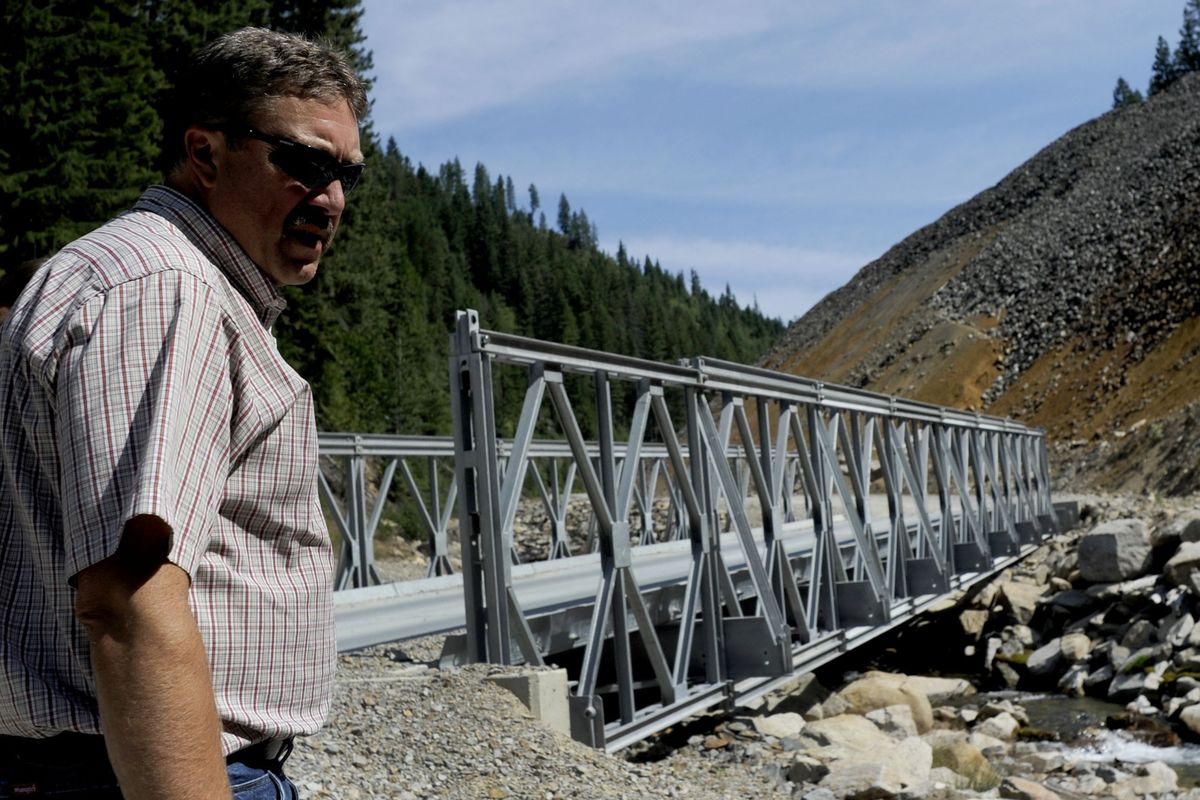Restoring Nine Mile Canyon
East Fork of Nine Mile Creek project could take 10 years, cost $88 million

NINE MILE CANYON, Idaho – Before his big break came, Jim Callahan spent 17 years searching for the mother lode.
The Michigan native staked his claim in this narrow, forested canyon northeast of Wallace during the late 1880s. Working mostly by himself with a single jack drill, Callahan reached a zinc-rich deposit in 1906 that netted him $110,000 from ore sales – worth more than $2 million today.
Callahan’s tale became one of the “rags to riches” stories of Idaho’s Coeur d’Alene Mining District, and his find forever transformed Nine Mile Canyon. The Interstate-Callahan Mine ushered in an era of industrial mining that extracted enormous wealth from the canyon at a cost still evident today.
The East Fork of Nine Mile Creek is one of the most polluted tributaries of the Coeur d’Alene River. Waste rock piles choke the streams feeding into the creek, and so much zinc flows through the system that fish can’t survive in the creek’s toxic waters.
Cleaning up the canyon will be an epic endeavor, costing about $88 million over eight to 10 years.
“It took them nearly 100 years to mine it, so it will take some time for us to clean it up,” said Dan Meyer, senior project manager for the Coeur d’Alene Trust.
The Nine Mile Canyon cleanup is one of the first big projects paid for by a $500 million trust. Established in 2009 through an Asarco bankruptcy settlement, money in the trust is dedicated to cleaning up historic mining pollution in Idaho’s Silver Valley.
Asarco operated for 110 years and had substantial holdings in the Coeur d’Alene District. The trust is expected to fund decades of remediation.
The Environmental Protection Agency works closely with the Coeur d’Alene Trust to rank cleanup projects, said Dan Silver, the trustee.
Nine Mile Canyon emerged as a priority because it flushes huge amounts of heavy metals into the Coeur d’Alene River system, which make their way downstream into Lake Coeur d’Alene, said Bill Adams, the EPA’s team leader for the cleanup work.
The company towns that sprang up around the Interstate-Callahan and two other large mines in Nine Mile Canyon are long gone. Cave-ins have closed the mine portals. And the aerial trams that once hauled ore from the mines to processing facilities exist only in historic photographs.
But enormous piles of waste rock – some as high as 100 feet tall – remain. Much of the rock is highly mineralized, with rusty stains pointing to the presence of iron oxide and other heavy metals. Water flowing through the rock piles becomes polluted with zinc, lead and cadmium.
Nine Mile Creek pumps about 90 pounds of zinc daily into the South Fork of the Coeur d’Alene River, said the EPA’s Adams. That’s 73 times higher than site-specific water quality standards for the creek, which were written to acknowledge the area’s natural mineralization, he said.
Zinc isn’t a particular concern for birds or mammals, but it’s highly toxic to fish and other aquatic creatures. Zinc damages the gills of trout, hampering the fish’s ability to absorb oxygen, Adams said.
Getting rid of the waste rock will require moving about 1.5 million cubic yards of material – or roughly enough rock to fill 150,000 standard-size dump trucks. A 30-acre site to hold the waste rock is being cleared this summer. When the rock is piled on the site and contoured, it will look like a ridge extending from the canyon wall, said the Coeur d’Alene Trust’s Meyer.
The new rock pile will be engineered to prevent water from flowing through it and transporting metals, Meyer said. A liner and two feet of clean topsoil will cap the mound.
“It will be pretty natural-looking when it’s done,” he said.
The new ridge will be visible from Callahan’s original claim site. An old photograph of the prospector shows a burly man in suspenders, inside a rustic cabin.
“He was a beast,” said Jim McReynolds, executive director of the Wallace District Mining Museum, commenting on tales of Callahan’s strength.
After he found the zinc deposit, Callahan hand-built a road to haul his ore to a milling site, said McReynolds, who helped compile a history of Nine Mile Canyon.
Callahan sold stock in his venture, eventually merging operations with the nearby Interstate Mine. But health problems dogged his remaining years.
Just as mining pollution left its mark on Nine Mile Canyon, a lifetime of mining took its toll on Callahan.
He developed silicosis from breathing in fine dust from the crushed rock and died in 1921, at age 62.